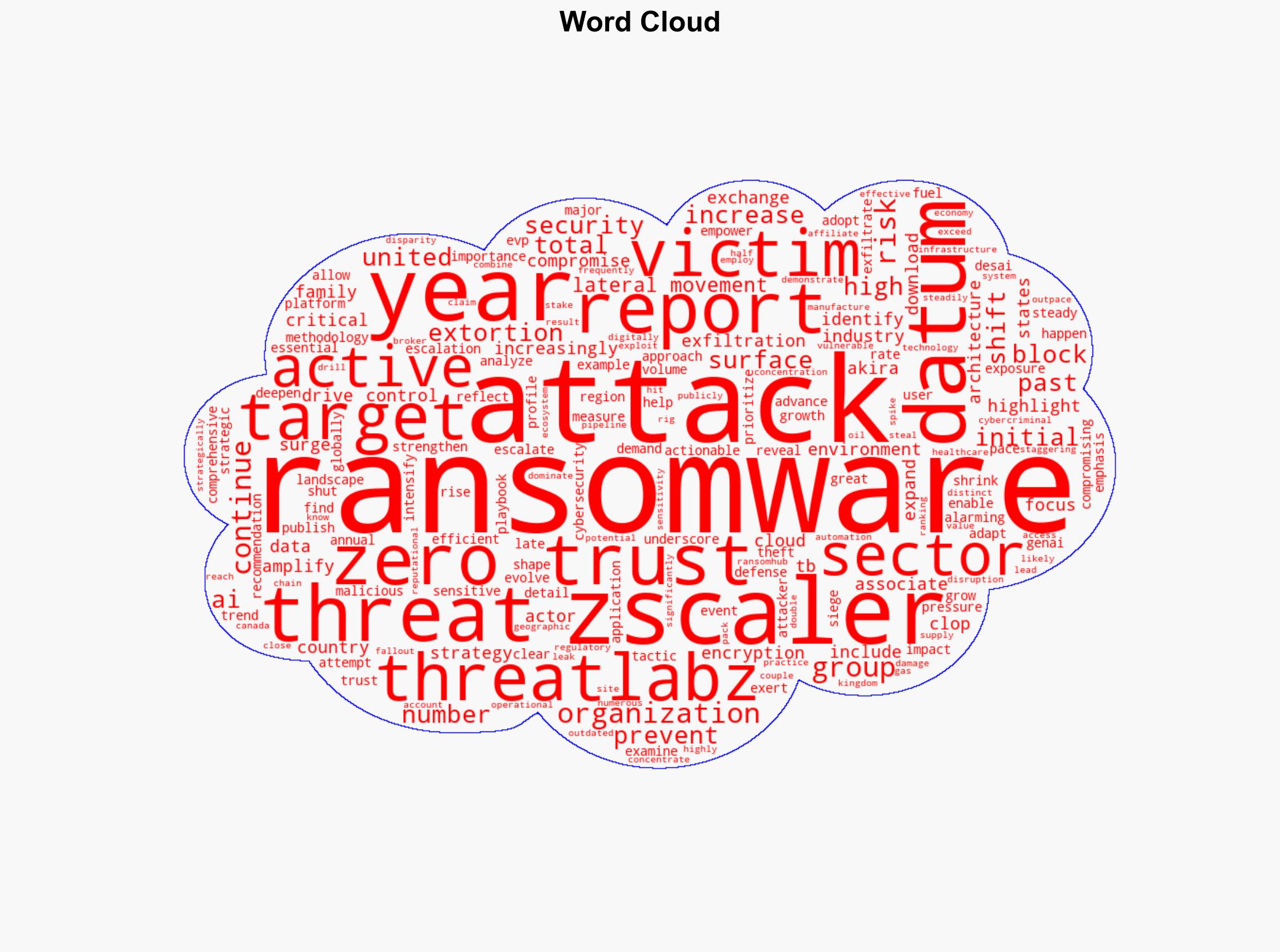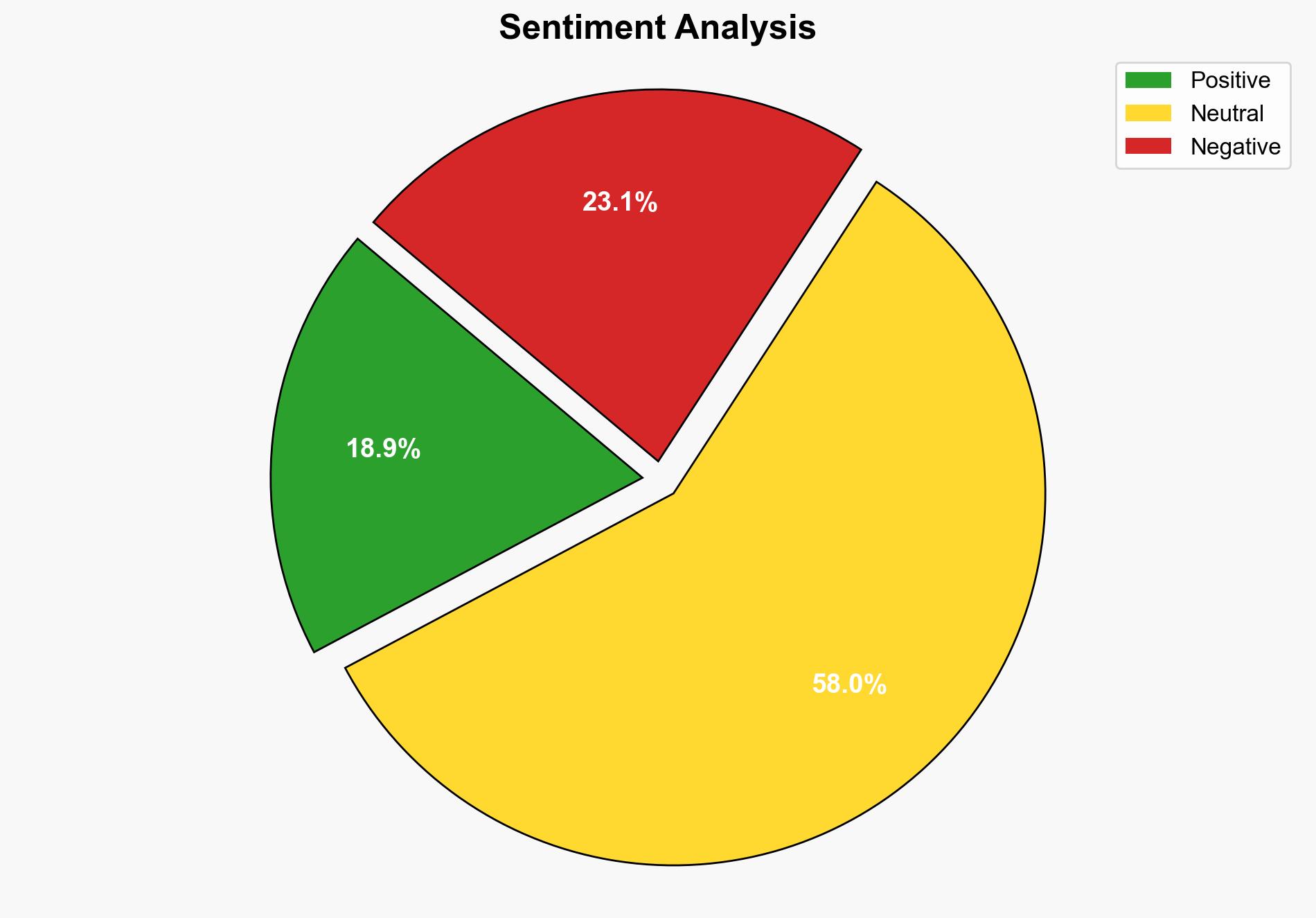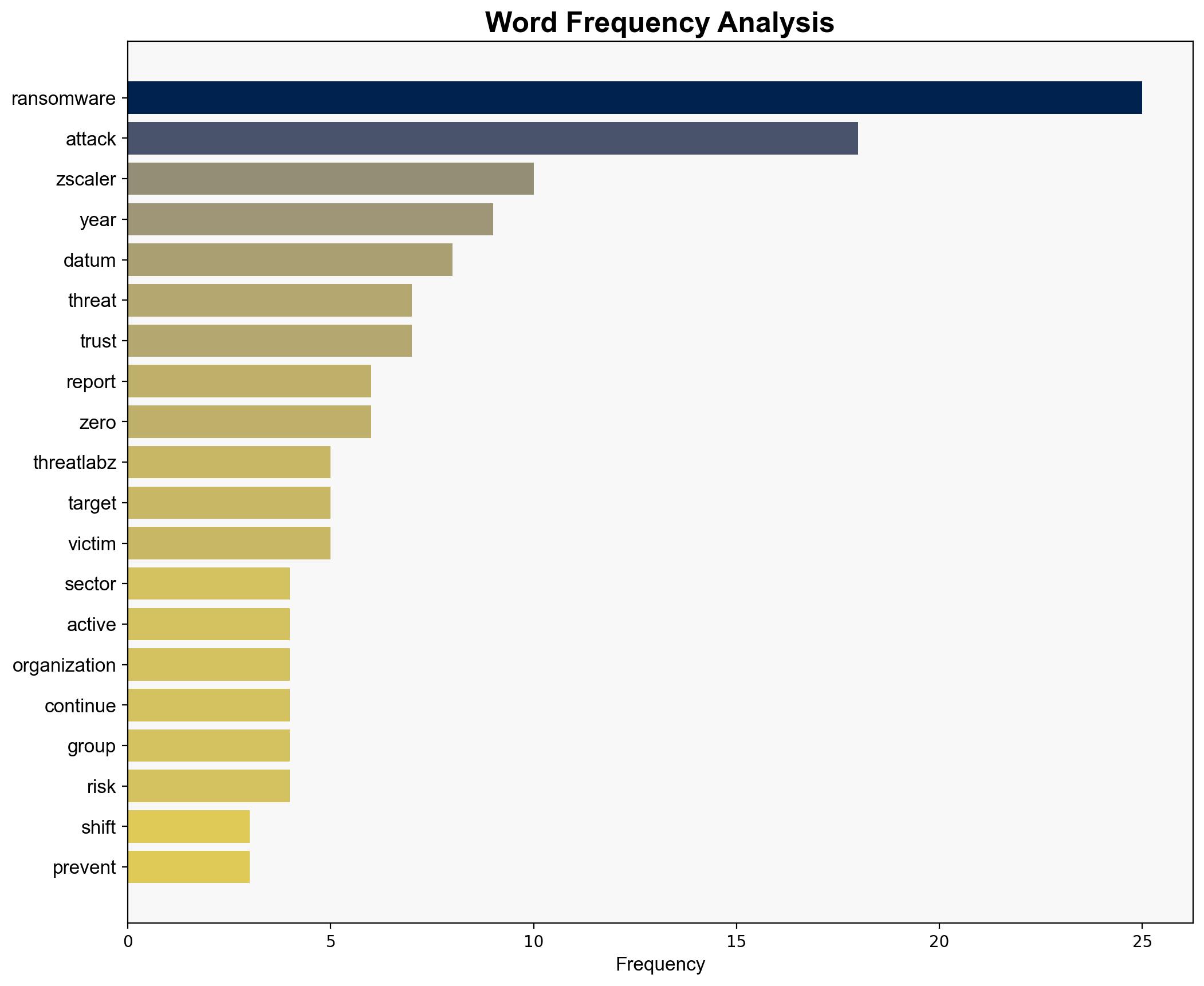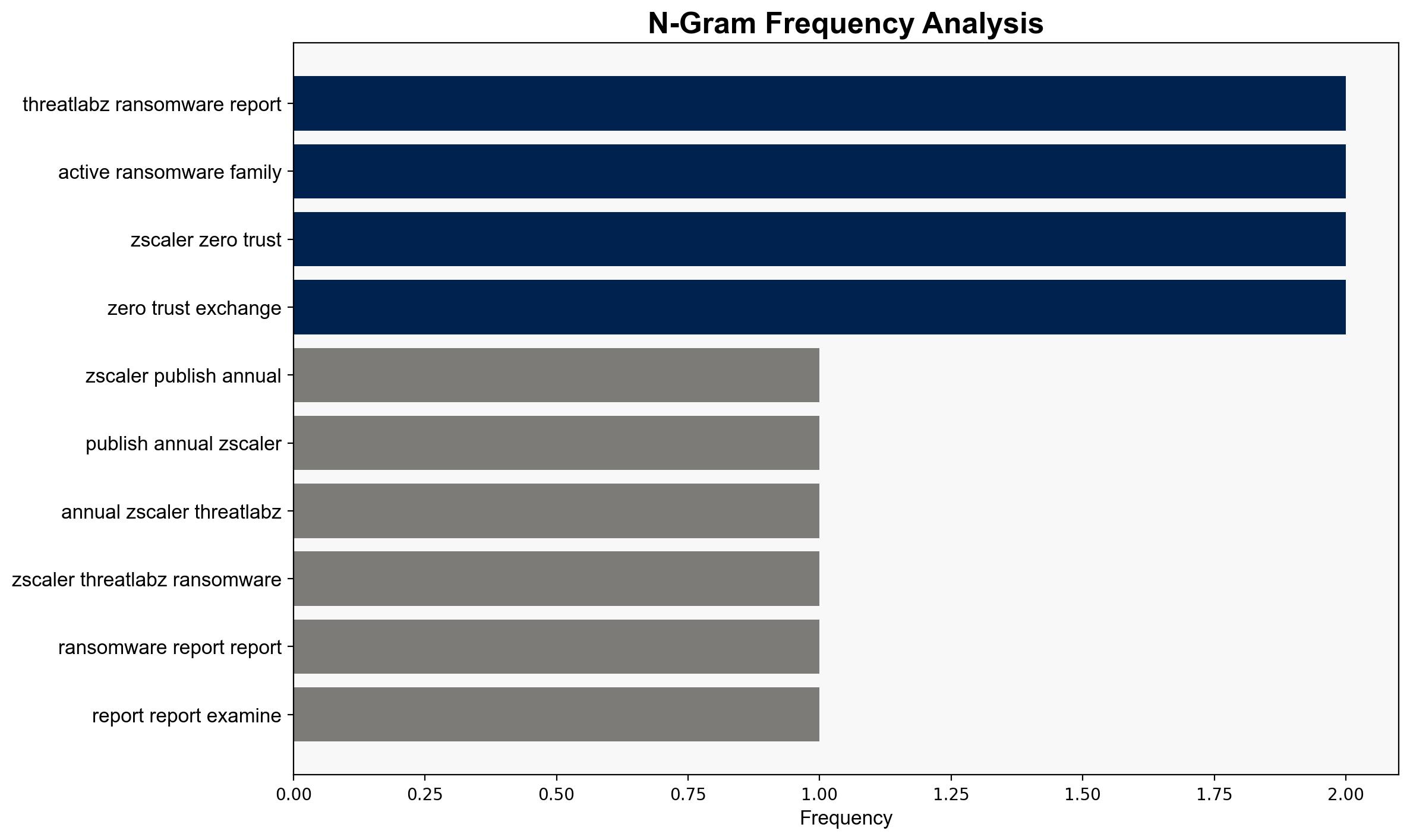Ransomware Surges as Attempts Spike 146 Amid Aggressive Extortion Tactics – Vmblog.com
Published on: 2025-07-29
Intelligence Report: Ransomware Surges as Attempts Spike 146 Amid Aggressive Extortion Tactics – Vmblog.com
1. BLUF (Bottom Line Up Front)
The surge in ransomware attacks, characterized by a 146% increase in attempts, is primarily driven by the strategic shift of ransomware groups towards aggressive extortion tactics and data exfiltration. The most supported hypothesis is that these groups are leveraging advanced technologies and exploiting vulnerabilities in high-value sectors. Confidence level: High. Recommended action: Organizations should adopt a comprehensive zero trust strategy to mitigate these threats.
2. Competing Hypotheses
1. **Hypothesis A**: The increase in ransomware attacks is due to the enhanced capabilities of ransomware groups, including the use of advanced technologies and sophisticated extortion tactics.
2. **Hypothesis B**: The rise in attacks is primarily a result of increased vulnerabilities in targeted sectors, such as outdated security practices and expanded attack surfaces in critical infrastructure.
Using ACH 2.0, Hypothesis A is better supported due to the detailed evidence of ransomware groups’ strategic shifts towards data exfiltration and extortion, as well as their adaptation to advanced security measures.
3. Key Assumptions and Red Flags
– **Assumptions**:
– Ransomware groups have the necessary resources and technological capabilities to execute complex attacks.
– Targeted sectors have not adequately updated their security practices.
– **Red Flags**:
– Potential underreporting or misreporting of ransomware incidents.
– Lack of detailed data on the effectiveness of zero trust strategies in preventing such attacks.
4. Implications and Strategic Risks
The continued escalation of ransomware attacks poses significant risks to economic stability, particularly in sectors like healthcare and critical infrastructure. The psychological impact on organizations and potential regulatory fallout could lead to increased costs and operational disruptions. Geopolitically, the concentration of attacks in the United States suggests a strategic targeting of high-value economies, which could exacerbate international tensions.
5. Recommendations and Outlook
- Organizations should implement a comprehensive zero trust architecture to limit attack surfaces and prevent lateral movement.
- Regularly update and patch systems to address vulnerabilities, particularly in critical infrastructure.
- Scenario-based projections:
- Best Case: Successful adoption of zero trust strategies significantly reduces ransomware incidents.
- Worst Case: Continued increase in attacks leads to widespread operational disruptions and economic losses.
- Most Likely: Incremental improvements in security measures slow the growth of ransomware attacks but do not eliminate the threat.
6. Key Individuals and Entities
– Deepen Desai
– Ransomhub
– Akira
– Clop
7. Thematic Tags
national security threats, cybersecurity, counter-terrorism, regional focus




